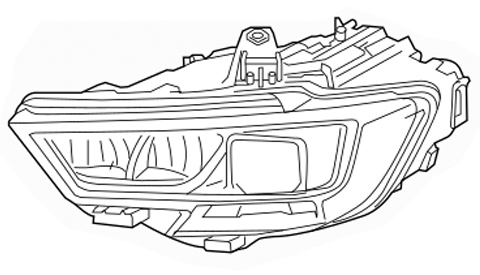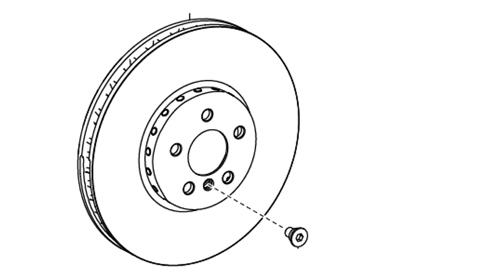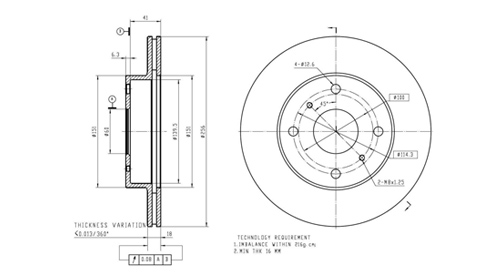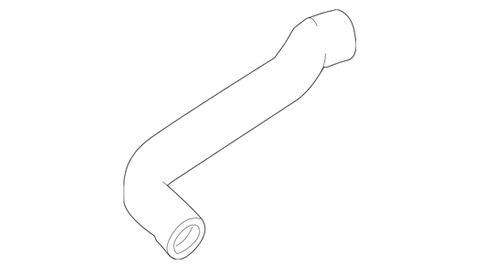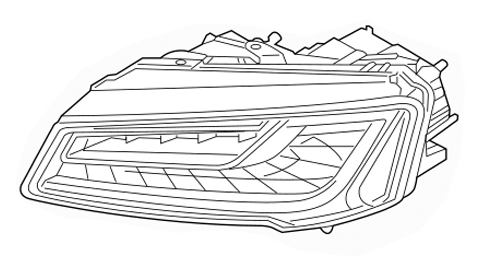-
Array
(
[0] => Array
(
[id] => 1
[siteid] => 1
[parentid] => 0
[parentstr] => 0,
[infotype] => 0
[classname] => Home
[navname] => Home
[alias] =>
[english] =>
[linkurl] => /
[relinkurl] => index.html
[picurl] =>
[picwidth] =>
[picheight] =>
[colorval] =>
[boldval] =>
[seotitle] => Automotive Lamp suppliers,Led Headlight solutions,Luz Led Para Moto price,Headli
[keywords] => Automotive Lamp suppliers,Led Headlight solutions,
[description] => IV Auto Parts is a Automotive Lamp suppliers, provides Led Headlight solutions,Luz Led Para Moto price,Headlights For Car fittings.
[orderid] => 1
[isnav] => true
[checkinfo] => true
[url] => index.html
[child] => Array
(
)
)
[1] => Array
(
[id] => 2
[siteid] => 1
[parentid] => 0
[parentstr] => 0,
[infotype] => 0
[classname] => About Us
[navname] => About Us
[alias] =>
[english] => We Make Fence Idea
[linkurl] => about.php
[relinkurl] => about.html
[picurl] =>
[picwidth] =>
[picheight] =>
[colorval] =>
[boldval] =>
[seotitle] => Car Head Lamp Agencies,vehicle Headlamp Wholesale,car Head Lamp Price; IV Auto P
[keywords] => car head lamp agencies,vehicle headlamp wholesale,
[description] => IV Auto Parts, built in Hongkong and based in mainland China, has specialized
in developing and exporting high quality fencing system since 2009.
[orderid] => 2 [isnav] => true [checkinfo] => true [url] => about.html [child] => Array ( [0] => Array ( [id] => 10 [siteid] => 1 [parentid] => 2 [parentstr] => 0,2, [infotype] => 0 [classname] => Our Culture [navname] => Our Culture [alias] => [english] => [linkurl] => about.php?cid=10 [relinkurl] => about-10-1.html [picurl] => [picwidth] => [picheight] => [colorval] => [boldval] => [seotitle] => [keywords] => [description] => [orderid] => 10 [isnav] => true [checkinfo] => true [url] => about-10-1.html [child] => Array ( ) ) [1] => Array ( [id] => 11 [siteid] => 1 [parentid] => 2 [parentstr] => 0,2, [infotype] => 2 [classname] => Our Team [navname] => Our Team [alias] => [english] => [linkurl] => team.php [relinkurl] => team.html [picurl] => [picwidth] => [picheight] => [colorval] => [boldval] => [seotitle] => [keywords] => [description] =>
We have been supplying Replacement Headlight assembly,Side Light,Tail Lights,driving Lights,Led Fog,Interior Light,Light Accessories,since 2009, and thanks to the contribution of our professional team, customers across the world thumb up to IV Aut [orderid] => 11 [isnav] => true [checkinfo] => true [url] => team.html [child] => Array ( ) ) [2] => Array ( [id] => 12 [siteid] => 1 [parentid] => 2 [parentstr] => 0,2, [infotype] => 0 [classname] => Reference List [navname] => Reference List [alias] => [english] => [linkurl] => reference.php [relinkurl] => reference.html [picurl] => [picwidth] => [picheight] => [colorval] => [boldval] => [seotitle] => [keywords] => [description] => [orderid] => 12 [isnav] => true [checkinfo] => true [url] => reference.html [child] => Array ( ) ) ) ) [2] => Array ( [id] => 3 [siteid] => 1 [parentid] => 0 [parentstr] => 0, [infotype] => 2 [classname] => Warranty [navname] => Warranty [alias] => [english] => [linkurl] => warranty.php [relinkurl] => warranty.html [picurl] => [picwidth] => [picheight] => [colorval] => [boldval] => [seotitle] => Halogen Headlamps Solution,Motorcycle Headlamp Services,Upgrade Headlight Cost; [keywords] => Halogen Headlamps Solution,Motorcycle Headlamp Ser [description] => IV Auto Parts Provided For You Halogen Headlamps Solution,Motorcycle Headlamp Services,Upgrade Headlight Cost Calculate.
[orderid] => 3 [isnav] => true [checkinfo] => true [url] => warranty.html [child] => Array ( [0] => Array ( [id] => 13 [siteid] => 1 [parentid] => 3 [parentstr] => 0,3, [infotype] => 2 [classname] => CERTIFICATES [navname] => CERTIFICATES [alias] => [english] => [linkurl] => warranty.php?cid=13 [relinkurl] => warranty-13-1.html [picurl] => [picwidth] => [picheight] => [colorval] => [boldval] => [seotitle] => [keywords] => [description] => Your partner all the way
At IV Auto Parts we work as a complete supplier: We develop, produce and sell finishing systems and make sure the operators are fully instructed and able to run the Parts.
On top of tha [orderid] => 13 [isnav] => true [checkinfo] => true [url] => warranty-13-1.html [child] => Array ( ) ) [1] => Array ( [id] => 34 [siteid] => 1 [parentid] => 3 [parentstr] => 0,3, [infotype] => 0 [classname] => FAQ [navname] => FAQ [alias] => [english] => [linkurl] => FAQ.php [relinkurl] => FAQ.html [picurl] => [picwidth] => [picheight] => [colorval] => [boldval] => [seotitle] => [keywords] => [description] => [orderid] => 28 [isnav] => true [checkinfo] => true [url] => FAQ.html [child] => Array ( ) ) [2] => Array ( [id] => 33 [siteid] => 1 [parentid] => 3 [parentstr] => 0,3, [infotype] => 0 [classname] => Service & After Sales [navname] => Service & After Sale [alias] => [english] => [linkurl] => ServiceAndAfterSales.php [relinkurl] => ServiceAndAfterSales.html [picurl] => [picwidth] => [picheight] => [colorval] => [boldval] => [seotitle] => [keywords] => [description] => [orderid] => 29 [isnav] => true [checkinfo] => true [url] => ServiceAndAfterSales.html [child] => Array ( ) ) ) ) [3] => Array ( [id] => 4 [siteid] => 1 [parentid] => 0 [parentstr] => 0, [infotype] => 2 [classname] => Products [navname] => Products [alias] => Products List [english] => Explore Auto Parts Products [linkurl] => products.php [relinkurl] => products.html [picurl] => [picwidth] => [picheight] => [colorval] => [boldval] => [seotitle] => Headlamp Car For Sale,buy Headlamp,refit Headlight Cost, Head Lamp Fittings; IV [keywords] => IV Auto Parts Provide You With Details Refit Buy [description] => IV Auto Parts Provide You With Details Refit Buy Headlight Cost,head Lamp Fittings For Sale.
[orderid] => 4 [isnav] => true [checkinfo] => true [url] => products.html [child] => Array ( [0] => Array ( [id] => 24 [siteid] => 1 [parentid] => 4 [parentstr] => 0,4, [infotype] => 2 [classname] => Headlight assembly [navname] => Headlight assembly [alias] => Headlight assembly [english] => Headlight assembly [linkurl] => products-24-1.html [relinkurl] => products-24-1.html [picurl] => [picwidth] => [picheight] => [colorval] => [boldval] => [seotitle] => [keywords] => [description] => [orderid] => 22 [isnav] => true [checkinfo] => true [url] => products-24-1.html [child] => Array ( ) ) [1] => Array ( [id] => 29 [siteid] => 1 [parentid] => 4 [parentstr] => 0,4, [infotype] => 2 [classname] => Taillight Assembly [navname] => Taillight Assembly [alias] => Taillight Assembly [english] => Taillight Assembly [linkurl] => [relinkurl] => products-29-1.html [picurl] => [picwidth] => [picheight] => [colorval] => [boldval] => [seotitle] => Taillight Assembly [keywords] => Taillight Assembly,Tail Lights,Tail Lamp,Led Tail [description] => Taillight Assembly,Tail Lamp,Led Tail Lights For Audi [orderid] => 23 [isnav] => true [checkinfo] => true [url] => products-29-1.html [child] => Array ( ) ) [2] => Array ( [id] => 25 [siteid] => 1 [parentid] => 4 [parentstr] => 0,4, [infotype] => 2 [classname] => Turn Signal Light [navname] => Turn Signal Light [alias] => Turn Signal Light [english] => Turn Signal Light [linkurl] => products-25-1.php [relinkurl] => products-25-1.html [picurl] => [picwidth] => [picheight] => [colorval] => [boldval] => [seotitle] => [keywords] => Turn Signal Light,Side Blinker,Audi Turn Signal Li [description] => Audi Turn Signal Light [orderid] => 24 [isnav] => true [checkinfo] => true [url] => products-25-1.html [child] => Array ( ) ) [3] => Array ( [id] => 36 [siteid] => 1 [parentid] => 4 [parentstr] => 0,4, [infotype] => 2 [classname] => Alternator [navname] => Alternator [alias] => Alternator [english] => Alternator [linkurl] => products-36-1.php [relinkurl] => products-36-1.html [picurl] => [picwidth] => [picheight] => [colorval] => [boldval] => [seotitle] => Alternator For with Audi [keywords] => Alternator For with Audi [description] =>
Email:
sales@ivautoparts.com
Tel.: +86 13933893619
What is the best pipe for air intake?
2025-11-03
Summary:
Of course. This is a common question for automotive enthusiasts looking to upgrade or replace their intake system. The "best" pipe material depends on your primary goal: maximum performance, durability, or cost-effectiveness.
Of course. This is a common question for automotive enthusiasts looking to upgrade or replace their intake system. The "best" pipe material depends on your primary goal: maximum performance, durability, or cost-effectiveness.
Here’s a detailed breakdown of the most common materials used for air intake hoses (including cold air intake hoses and 3-inch intake hoses), along with their pros and cons.
1. Silicone Intake Hose
This is often considered the top-tier choice for performance and modified vehicles.
Pros:
Excellent Heat Resistance: Silicone can withstand under-hood temperatures far better than rubber or plastic, significantly reducing heat soak. This helps maintain a denser, cooler air charge.
High Flexibility: It's very pliable, making installation easier, especially in tight engine bays or custom setups.
Durability: Resistant to ozone, cracking, and degradation from engine chemicals and oils. It has a very long lifespan.
Aesthetic Appeal: Available in a wide variety of vibrant colors to customize your engine bay.
Cons:
Cost: This is the most expensive option.
Requires External Clamps: Must be secured with high-quality T-bolt clamps for a perfect seal under boost pressure (important for turbocharged applications).
Best for: High-performance builds, turbocharged/supercharged engines, and enthusiasts who want the best combination of heat resistance and durability.
2. Rubber Intake Hose (OE Style)
This is the material most often used by Original Equipment Manufacturers (OEMs).
Pros:
Cost-Effective: Inexpensive to produce and replace.
Adequate Flexibility: Flexible enough for OEM installation and basic repairs.
Good Seal: Often has molded ends that snap or clamp securely onto factory airboxes and throttle bodies.
Cons:
Poor Heat Resistance: Rubber absorbs and transfers under-hood heat more readily than silicone, leading to higher intake air temperatures (IATs).
Degrades Over Time: Can become brittle, crack, dry out, and eventually fail, especially when exposed to high heat and oil vapors.
Best for: Stock replacements, budget-conscious repairs, and vehicles where performance is not a priority.
Many modern cars use a rigid, hard plastic intake tube.
Pros:
Smooth Interior Walls: Minimizes air turbulence and restriction, which can be beneficial for airflow.
Lightweight: Very light compared to other materials.
Cost-Effective for OEMs: Cheap to mass-produce.
Cons:
Brittle: Can become brittle with age and heat cycles, leading to cracks that are hard to see.
No Flexibility: Cannot be used for custom applications. A single crack means the entire tube must be replaced.
Heat Soak: The plastic itself can get hot and radiate heat into the intake air.
Best for: OEM-style replacements. Not suitable for custom intake setups.
4. Aluminum Pipe / Metal Intake Tube
A popular choice for cold air intake kits and custom fabrications.
Pros:
Extremely Smooth Interior: Offers excellent, unrestricted airflow.
Rigid and Strong: Will not collapse under high vacuum or boost.
Heat Reflectivity: The metallic surface can reflect radiant heat, though the tube itself will get hot from conduction. This is often mitigated with a heat-reflective wrap.
Cons:
Heat Conduction: Aluminum is a great conductor of heat. Without thermal barrier coatings or wraps, it can easily transfer engine bay heat to the intake air.
Weight: Heavier than silicone or plastic.
Corrosion: Can corrode if not anodized or coated.
No Flexibility: Requires precise bends and couplers for installation.
Best for: Maximizing airflow in a well-designed cold air intake system that draws air from outside the hot engine bay. Often used in conjunction with silicone couplers.
---
Application-Specific Advice
For a Cold Air Intake Hose: The primary goal is to keep air temperature low. The best choice is often a combination: an aluminum pipe for its smooth, rigid airflow path, connected with silicone couplers for flexibility and heat resistance. The key is the design of the system (location of the filter) more than just the hose material.
For a 3-Inch Intake Hose: This is a common size for performance applications. Silicone is the superior choice for the connecting hoses/couplers due to its flexibility and resistance to collapsing under high airflow. The main pipe can be aluminum for optimal flow.
Summary & Final Recommendation
Best Overall Performance & Durability: Silicone Intake Hose. It offers the best combination of heat resistance, flexibility, and long-term reliability. It is the preferred choice for tuned and modified vehicles.
Best for Maximum Airflow in a Cold Air System: Aluminum Pipe with silicone couplers. This setup provides a smooth, rigid airway while using silicone for its superior sealing and flexibility at the connection points.
Before purchasing, always ensure the diameter (e.g., 3 inch) and shape of the connections match your vehicle's throttle body and air filter/airbox. For performance applications, high-quality T-bolt clamps are essential to prevent leaks.
Here’s a detailed breakdown of the most common materials used for air intake hoses (including cold air intake hoses and 3-inch intake hoses), along with their pros and cons.
1. Silicone Intake Hose
This is often considered the top-tier choice for performance and modified vehicles.
Pros:
Excellent Heat Resistance: Silicone can withstand under-hood temperatures far better than rubber or plastic, significantly reducing heat soak. This helps maintain a denser, cooler air charge.
High Flexibility: It's very pliable, making installation easier, especially in tight engine bays or custom setups.
Durability: Resistant to ozone, cracking, and degradation from engine chemicals and oils. It has a very long lifespan.
Aesthetic Appeal: Available in a wide variety of vibrant colors to customize your engine bay.
Cons:
Cost: This is the most expensive option.
Requires External Clamps: Must be secured with high-quality T-bolt clamps for a perfect seal under boost pressure (important for turbocharged applications).
Best for: High-performance builds, turbocharged/supercharged engines, and enthusiasts who want the best combination of heat resistance and durability.
2. Rubber Intake Hose (OE Style)
This is the material most often used by Original Equipment Manufacturers (OEMs).
Pros:
Cost-Effective: Inexpensive to produce and replace.
Adequate Flexibility: Flexible enough for OEM installation and basic repairs.
Good Seal: Often has molded ends that snap or clamp securely onto factory airboxes and throttle bodies.
Cons:
Poor Heat Resistance: Rubber absorbs and transfers under-hood heat more readily than silicone, leading to higher intake air temperatures (IATs).
Degrades Over Time: Can become brittle, crack, dry out, and eventually fail, especially when exposed to high heat and oil vapors.
Best for: Stock replacements, budget-conscious repairs, and vehicles where performance is not a priority.
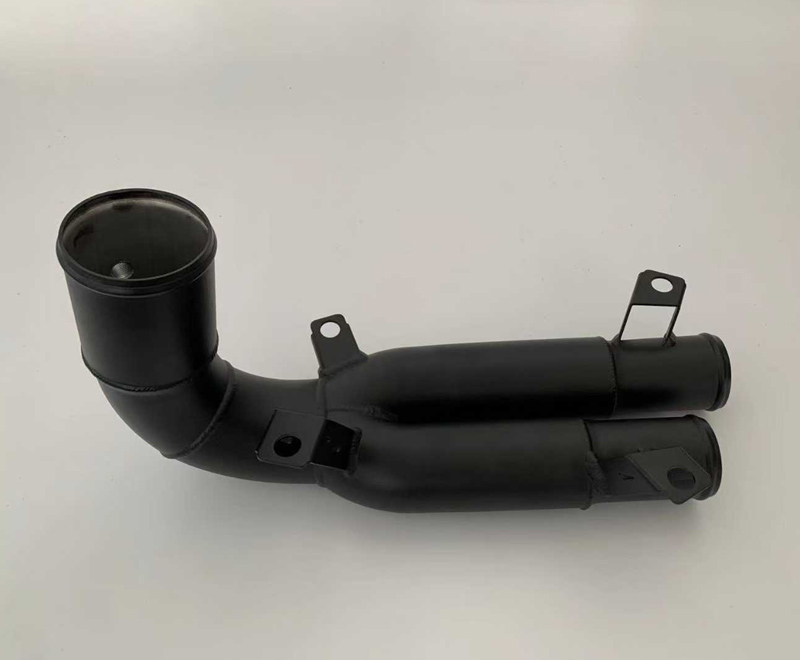
Many modern cars use a rigid, hard plastic intake tube.
Pros:
Smooth Interior Walls: Minimizes air turbulence and restriction, which can be beneficial for airflow.
Lightweight: Very light compared to other materials.
Cost-Effective for OEMs: Cheap to mass-produce.
Cons:
Brittle: Can become brittle with age and heat cycles, leading to cracks that are hard to see.
No Flexibility: Cannot be used for custom applications. A single crack means the entire tube must be replaced.
Heat Soak: The plastic itself can get hot and radiate heat into the intake air.
Best for: OEM-style replacements. Not suitable for custom intake setups.
4. Aluminum Pipe / Metal Intake Tube
A popular choice for cold air intake kits and custom fabrications.
Pros:
Extremely Smooth Interior: Offers excellent, unrestricted airflow.
Rigid and Strong: Will not collapse under high vacuum or boost.
Heat Reflectivity: The metallic surface can reflect radiant heat, though the tube itself will get hot from conduction. This is often mitigated with a heat-reflective wrap.
Cons:
Heat Conduction: Aluminum is a great conductor of heat. Without thermal barrier coatings or wraps, it can easily transfer engine bay heat to the intake air.
Weight: Heavier than silicone or plastic.
Corrosion: Can corrode if not anodized or coated.
No Flexibility: Requires precise bends and couplers for installation.
Best for: Maximizing airflow in a well-designed cold air intake system that draws air from outside the hot engine bay. Often used in conjunction with silicone couplers.
---
Application-Specific Advice
For a Cold Air Intake Hose: The primary goal is to keep air temperature low. The best choice is often a combination: an aluminum pipe for its smooth, rigid airflow path, connected with silicone couplers for flexibility and heat resistance. The key is the design of the system (location of the filter) more than just the hose material.
For a 3-Inch Intake Hose: This is a common size for performance applications. Silicone is the superior choice for the connecting hoses/couplers due to its flexibility and resistance to collapsing under high airflow. The main pipe can be aluminum for optimal flow.
Summary & Final Recommendation
Best Overall Performance & Durability: Silicone Intake Hose. It offers the best combination of heat resistance, flexibility, and long-term reliability. It is the preferred choice for tuned and modified vehicles.
Best for Maximum Airflow in a Cold Air System: Aluminum Pipe with silicone couplers. This setup provides a smooth, rigid airway while using silicone for its superior sealing and flexibility at the connection points.
Before purchasing, always ensure the diameter (e.g., 3 inch) and shape of the connections match your vehicle's throttle body and air filter/airbox. For performance applications, high-quality T-bolt clamps are essential to prevent leaks.


